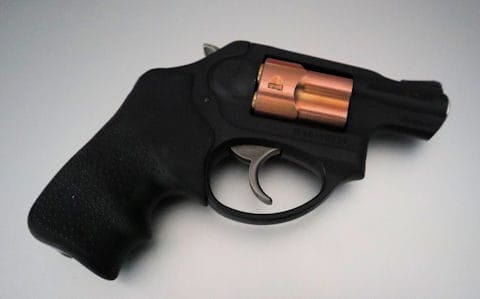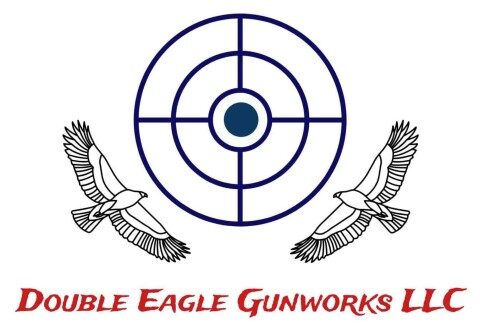You have finally decided to get a gun. The first thing you want to do is get an experienced shooter to show you the different types of guns available.
After you handle a few firearms at a gun show or a gun store, you will find yourself developing preferences: semi-automatic versus revolver, large versus small, and fancy versus plain.
Economics factor in, of course, because entry level models vary by hundreds of dollars.
The reason for your purchase will guide you toward one or two models that you would like to try.
FINDING A RANGE
You can ask someone at your local gun store where to find a shooting range, or type your zip code and the words “shooting range” into an internet search engine. I did that and pulled up a map with five ranges within driving distance.
RENTING A GUN
Now that you have narrowed down your list of possible guns, you can rent the one that interest you at your local gun range. This enables you to try them without the cost of purchasing them.
It is rare for the first gun you buy to be the one you continue to carry for years, because you learn as you go.
The first one you choose might have a bulky handle that does not conceal well in your light clothing, or it might be so small that it has a bigger kick than you like.

In my case, I purchased a Taurus Model 85 .38 Special revolver that felt good in my hand and looked nice, but had a grip at the wrong angle for my fingers.
I could shoot it once without cocking the hammer, but I quickly fatigued even in dry firing practice (shooting with no bullets; read up on it before you try it).

I moved up to the more expensive Ruger LCR .38 Special revolver whose grip fit my hand better. I can shoot all five rounds out of the Ruger without cocking the hammer.
THE COST OF THE VISIT
You may bring your own weapons to the shooting range, and your experienced friend will likely own one or two models that you would like to try.
If it is connected to a gun store, as most are, the shooting range will also allow you to rent guns for the duration of your stay.
Handgun rental in South Carolina is around $15-25 per gun for basic handguns. You can pay far more if you find a shooting range that rents machine guns.
The lane itself is around $15 or $20 per hour, and then targets and ammunition are extra. Ranges vary on whether they will allow you to use your own ammunition in their guns.
The current political situation has caused a run on guns and ammunition, so be aware that prices are on the increase right now.
Plan to drop at least $75 before you are done, and much more if you stay several hours. I am a shoot-and-be-done type, but my husband likes to take full advantage of a day at the range.
THE RULES
You will be asked for your driver’s license to prove your age, and you will have to sign forms agreeing to follow the rules of the range. The minimum age will vary but may be 18 or 21 depending on the gun you want to shoot.
You might be able to bring a child with you, but call first to ascertain the age limit. Ranges may discourage pregnant women from shooting because of the lead exposure involved. Look into lead free ammunition if you are pregnant or nursing.
Typical rules include whether or not you can practice drawing from your holster, whether or not you can pick up casings that fall, and what to do when a gun jams.
The Range Safety Officer will be onsite to ensure the rules are followed and to assist you in the case of a mishap. You will want to wash your hands after you shoot to remove the lead residue.
EYE AND EAR PROTECTION
You may bring your own eye and ear protection or rent from the range, but you must wear your protection from the moment you enter the shooting area until you leave.
Repeated concussions in a large echoing room can quickly cause hearing damage, and a hot casing that hits your eye will have serious consequences.
Hearing damage starts with prolonged exposure above 85 decibels, the level of a vacuum cleaner, and the pain threshold for unprotected ears is between 120 (siren) and 140 decibels (jet engine).
Gun loudness starts around 97 decibels for a BB gun and tops 170 decibels for some rifles. The range may limit shooters to certain types of guns, but some of them will have a very loud boom.
WHAT TO WEAR TO THE RANGE
Proper attire for a shooting range includes closed-toes shoes and a shirt with sleeves because of the casings that eject when you shoot semi-automatics. Your neckline should sufficiently cover the chest to avoid a casing landing in sensitive territory.
THE EXPERIENCE
At an indoor shooting range you will be shown to a very large room divided into the firing lanes, where you will stand, and the area into which you will shoot, which ends with a backstop.
You will be led to a small cubicle called a shooting booth, with big plastic shields to demarcate your designated area. It will take a moment to stop flinching at every shot from the next booth.
You will attach your paper targets to a pulley, essentially a fancy clothesline that moves, and send the target to a designated location. The farther away you put the target, the harder it is to land the bullet in the center.
You load the gun, prepare yourself mentally, get the right stance, adjust your grip, point the gun, make sure you have a clear view to the target, and squeeze the trigger.
After you shoot a few rounds, you bring the target back and check your work. The goal is to make holes in the center of the target.
For self defense, the goal is to stop the threat quickly, which is achieved by hitting center mass, where the heart and lungs are located, or by going for a head shot.
Most ranges will have a variety of targets for sale, featuring a human form, an animal outline, concentric rings, or geometric shapes. There are even targets with advice printed on them based on where you hit the target.
OUTDOOR RANGES

An outdoor range will require the same safety procedures, but you will be shooting into open air at a really big mound of dirt perhaps hundreds of yards away from you.
The wind and weather now figure into the trajectory of your bullet. The outdoor range can be a giant area with no grass or dirt, or it can be a tree-lined section of a gun enthusiast’s back yard built to meet safety standards.
Follow all the rules in an outdoor setting and be especially mindful of the possibility that someone may enter the area where you are aiming.
Before shooting at an outdoor range, you ascertain that everyone in the vicinity has eyes and ears protected.
When it is time to retrieve targets, the Range Safety Officer will yell “CEASE FIRE!” to ensure that no one is shooting into an area where a person is about to walk. Do not fire again until the Range Safety Officer announces that the area is clear.
WHAT TO DO NEXT
If you decide that owning a gun is for you, your next step is to purchase one. Take an experienced friend along when you shop.
Have your friend mentor you as you build your shooting skill, or take classes from a professional. Wait to take your Concealed Weapons Permit class until you have put a few bullets downrange.
The information will make more sense if you have done it a few times, and qualifying at the range should not be your first shooting experience.
Shooting can be safe and fun with the proper precautions.


